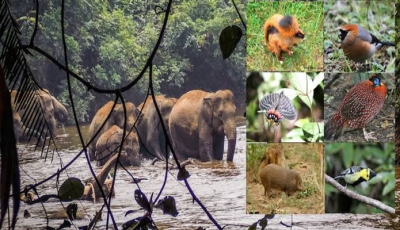
If you thought that the mesmerizing beauty of the rainforests of the Western Ghats is unrivalled, you probably are wrong! The rainforests of north-eastern India are perhaps the most captivating of all rainforests, thanks to their comparatively lower density of human inhabitants!
These Indian rainforests stretch across the six eastern states of northern Assam, Nagaland, Manipur, Mizoram, Tripura, and part of Arunachal Pradesh. Most of this area is at an altitude of around 900 metres. It serves as a haven to several evergreens and semi-evergreen rainforests, moist deciduous monsoon forests, riparian (wetland) forests, swamps, and grasslands.
The evergreen rainforests of Northeast India spread their foliage in the wet valleys of Assam, the foothills of the eastern Himalayas, lower parts of the Naga Hills, Meghalaya, Mizoram, and Manipur, owing mainly to the heavy rainfalls received in these regions.
These areas are renowned for their moist monsoon forests that abound in precious sandalwood and rosewood trees and, of course, the Sal trees.
The Joy-dihing wildlife sanctuary of the upper regions of Assam comprises the Joypur reserve forests, Dirak reserve forests, and Dihing reserve forests. The Sanctuary is home to a wide range of primate species like the Rhesus Macaque, Assamese Macaque, Capped langurs, Slow loris, Pig-tailed Macaque, Stump-tailed Macaque, Hoolock Gibbons, and also a large elephant population.
Picture Credit : Google




